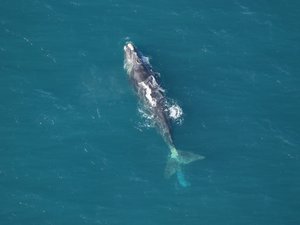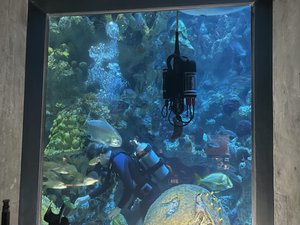
Researchers at Woods Hole Oceanographic Institute and MIT are collaborating on a new type of adhesive — one that enables sensors to be applied to the skin, or slime, of fragile marine animals.
It started with a drive from Woods Hole to MIT with a cooler full of squid. Now it holds promise as a less-invasive, safer, and quicker way to tag animals and monitor their movement and behaviors.
Scientists say the findings could help us understand the impacts of climate change on the movement patterns of squid and jellyfish, along with other animals, that have not regularly been monitored due to challenges affixing them with tracking devices.
Seth Cones and Camilo Duque Londono are co-authors on the new WHOI and MIT study. Cones, a Ph.D. candidate in the MIT/WHOI joint program in oceanography/applied ocean science & engineering, said he'd heard of research on hydrogels that Duque Londono was involved in at MIT. The hydrogels have historically been used in the medical field, but Cones wanted to test their use on animals.
The goal of monitoring squids and jellyfish is to understand their migration and energy usage patterns, and see how they react to changing ocean temperatures, Cones said.
“To get at some of these questions, we need to be able to monitor how they are interacting with the ecosystem,” he said.
- Sign up for The Beat, BostInno’s free daily innovation newsletter. See past examples here.
Traditional methods of attaching sensors can be disruptive to the animals. Past efforts either involve firm glues, which impede the animals' movement, or suturing the tags onto the animals. The MIT-developed hydrogel would let the animals continue to behave as normal, making the data the sensors uncover more valuable. The gel forms a chemical bond between the sensor and the animal’s skin.
The research began in a laboratory setting at MIT, simulating the adhesive in computer models and on tissue of dead squids. Later, the research team traveled to Woods Hole to try it in a tank setting, and also had success in an in-the-field experiment in the Azores.
The gel adhesive also makes the tagging process faster, Cones said. Instead of taking as much as 10 minutes to affix a sensors, the hydrogel adhesive can be attached in 20 seconds. That reduces the harm to the animals, as well as enabling researchers to head into the field with a leaner operation.
“Being out of the water for a shorter amount of time is actually a really big deal,” Cones said.
The adhesive is variable and has also shown promise on affixing sensors to lobsters, which have very different external tissue to squid.








